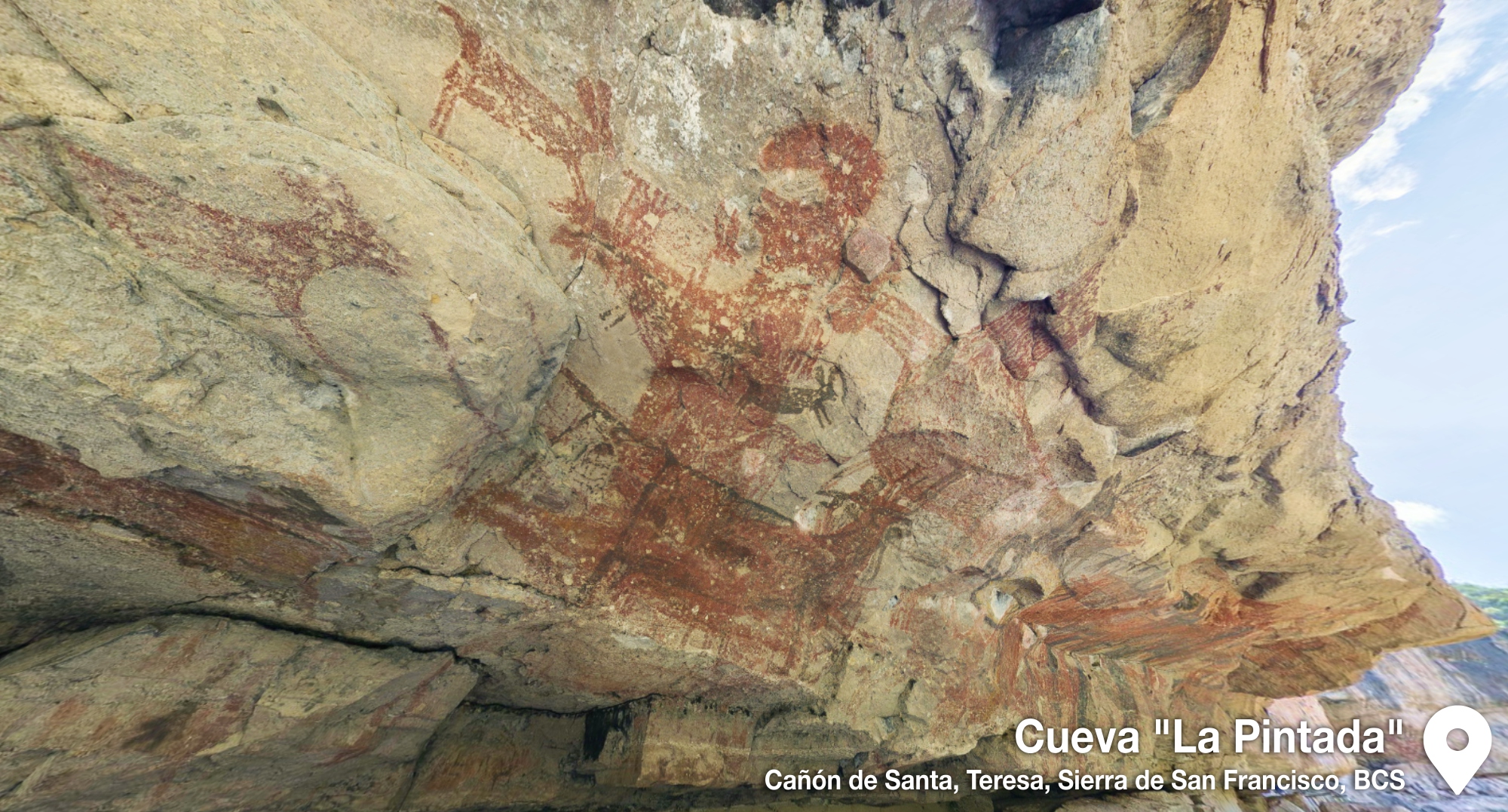Cueva La Pintada

The Pintada cave is located on the right bank of the San
Pablo stream, in the depth of a canyon called Santa Teresa, or also
"Salsipuedes". The cave is at an altitude of five hundred and forty
meters, in the heart of the Sierra de San Francisco, municipality of Mulegé, in
Mexico. The name of "La Pintada" is due to the first ranchers who
lived nearby, because they mentioned it because of the large number of figures,
lines and points that were profusely made there. Many of the figures are
painted on top of each other forming up to seven different pictorial layers, to
the extent that it is difficult to recognize each other, particularly the
deepest ones. For some time La Pintada was known as “Gardner Cave” because the
American writer Erle Stanley Gardner made them known through a report that was
published in Life magazine in 1962. As the magazine was distributed In a
massive way in different languages, Gardner showed himself in it as if he were
the discoverer of this cave and also of some others that are located nearby,
such as San Julio, La Soledad and Las Flechas. However, the existence of sites
with cave paintings has been referred to since the time of the missions by
different Jesuit religious, including one who was in charge of the San Ignacio
mission and was named José Mariano Rothea. On the other hand, the ranchers who
populated the region were aware of the existence of the paintings and discussed
it colloquially with their relatives and countrymen from nearby towns. For many
of them, the "merely" discoverer of this cave was Cesario Arce,
grandson of Buenaventura Arce, the founding trunk of all the Maple in the
mountains.
Some of the rock paintings on the peninsula were made very
early in history, when the man who inhabited this region of the world still did
not know about writing, and on the other hand their languages were barely
under construction, that is, creating words that would designate things. Thanks
to different research papers, some scholars refer the human presence in La
Pintada to an age of just over 10,000 years.
Detalles
Lugar: Mulegé, Mulegé
Dirección: Camino a San Francisco de la Sierra, Mulegé, Baja California Sur
Página web: Sendarupestre.cultura-bcs.gob.mx

